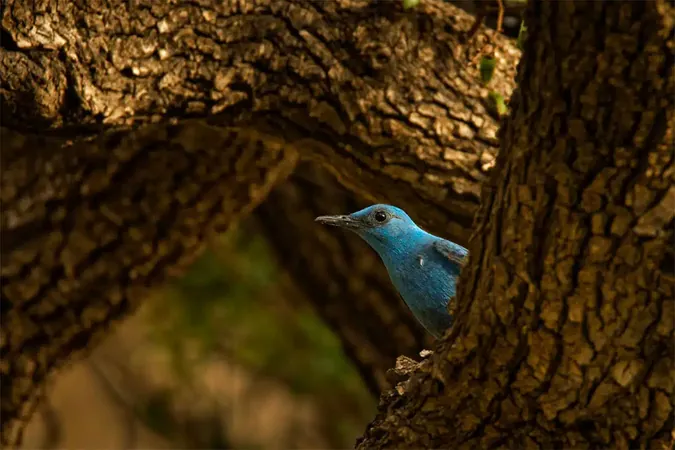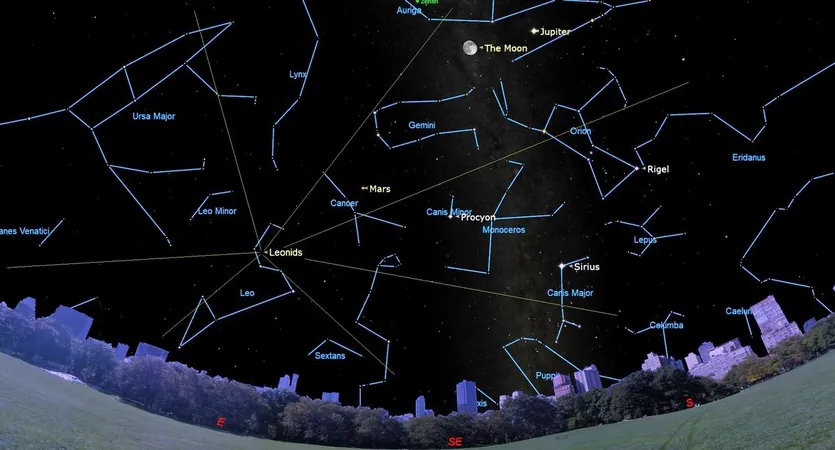
Amateur Photographer Stumbles Upon the Bird of the Century: A Historic First for the U.S.
2024-11-23
Author: Ken Lee
In a remarkable turn of events, amateur photographer Alex Sanchez was traversing the breathtaking trails near cascading waterfalls when fate intervened. Nestled within the coastal vegetation, he spotted an unusual bird that would soon create a frenzy in the birding community. Captivated by its striking blue-gray plumage adorned with delicate orange hues, Sanchez instinctively raised his camera, capturing a series of photographs that would soon become legendary.
“I was thrilled - it's not every day that a novice photographer gets to see something so incredibly rare,” Sanchez exclaimed, his voice brimming with excitement as he recounted the unforgettable moment.
A Milestone in Ornithology: The Blue Rock Thrush
The exotic bird Sanchez captured on film has been officially classified as a Blue Rock Thrush (Monticola solitarius), a species predominantly found across Europe and Asia. This extraordinary sighting marks the first verified presence of the Blue Rock Thrush in the United States, setting off a wave of exhilaration amongst ornithologists and birdwatchers alike.
Key Features of the Blue Rock Thrush:
Average length of 22 cm
Weight between 37 to 54 grams
Noteworthy melodious song that makes it a favorite among birders
Males flaunt vibrant blue-gray plumage while females and juveniles display a brownish coloring with lighter underbelly striping
Previous reports claimed sightings in British Columbia back in 1994, but some experts have raised skepticism about those encounters, elevating Sanchez's discovery to even greater significance.
A Community United: The Response to the Rare Sighting
Social media erupted once the news spread, igniting lively discussions among bird enthusiasts and professionals. Brodie Cass Talbott, an ornithology professor at the Bird Alliance of Oregon, emphasized just how rare this occurrence is: “Having a national record in Oregon is extremely rare—it might not happen again for decades.”
To put this groundbreaking sighting in perspective, North America's history with the Blue Rock Thrush is sparse, making this appearance an event of monumental importance.
The Theories Behind This Avian Mystery
Experts and bird lovers alike are left pondering how this Blue Rock Thrush ventured so far from its typical range, which usually extends from North Africa through the Middle East to Japan and Southeast Asia. Several intriguing theories have emerged:
Storm Displacement: Could extreme weather conditions have sent the bird off course?
Ship Assistance: Perhaps the thrush took refuge on a ship traversing the Pacific Ocean.
Climate Change Influence: Shifts in environmental conditions might be altering traditional migration pathways.
Genetic Anomaly: A rare mutation may have impacted its navigational instincts.
As ornithologists scrutinize this exceptional find, both amateur bird watchers and seasoned professionals remain eagerly vigilant, hoping for another glimpse of this elusive visitor.
This unprecedented sighting serves as a poignant reminder of nature’s ability to astound us, revealing the hidden beauty of the avian world—even during an era when explorations have reached every nook and cranny of the globe. It underscores not only the significance of citizen science in wildlife observation but also the endless potential for groundbreaking discoveries in the most unexpected locales.
As the ornithological community revels in this historic occasion, it’s evident that the allure of the “Bird of the Century” will captivate imaginations and inspire future generations of nature enthusiasts for years to come. Don’t miss out—this is just the beginning of what the fascinating world of birds has to offer!



 Brasil (PT)
Brasil (PT)
 Canada (EN)
Canada (EN)
 Chile (ES)
Chile (ES)
 España (ES)
España (ES)
 France (FR)
France (FR)
 Hong Kong (EN)
Hong Kong (EN)
 Italia (IT)
Italia (IT)
 日本 (JA)
日本 (JA)
 Magyarország (HU)
Magyarország (HU)
 Norge (NO)
Norge (NO)
 Polska (PL)
Polska (PL)
 Schweiz (DE)
Schweiz (DE)
 Singapore (EN)
Singapore (EN)
 Sverige (SV)
Sverige (SV)
 Suomi (FI)
Suomi (FI)
 Türkiye (TR)
Türkiye (TR)